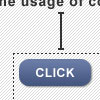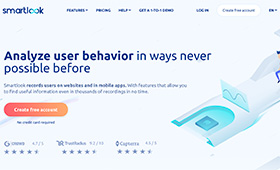Artificial Intelligence as Part of UX Design
Artificial intelligence has quickly become a part of our everyday lives. As businesses across all types of industries realize the benefits of artificial intelligence, they are able to simplify routine tasks and transform their business.
User experience is a crucial component in a company’s ability to deliver the highest quality service to their customers. Now, more than ever, businesses are fighting to deliver the best customer experience to set their products and services apart from the competition.
Let’s take a closer look at artificial intelligence and how it relates to UX design. If you want to create a quality, innovative experience for your customers, you need to incorporate the latest and greatest artificial intelligence trends into the way you do business.
Here’s how artificial intelligence has changed the business industry, some popular forms of AI you interact with daily, and the latest ways it can enhance your business.
Artificial Intelligence in today’s business world
As a leader in web development and quality web design, we’ve watched the way businesses deliver their user experience change again and again. But, artificial intelligence has created a truly unique trend in the business world. And while some worry about the future of user experience designer jobs, artificial intelligence programmer salary is more competitive than ever. That’s because knowledgeable designers are the driving force behind the most common uses of AI across all business industries.

The main industries that have been heavily influenced by Artificial Intelligence.
The truth is that there are already many real-life applications of artificial intelligence that you use every single day without realizing it. The use of artificial intelligence has allowed vast changes to take place in industries such as transportation, healthcare, farming and agriculture, and information technology. Fortunately, this only scratches the surface of where AI will take us in the future. As businesses compete to deliver the best UX, we are guaranteed to see AI emerge in many new ways.
Today’s common Artificial Intelligence applications
When we think of Artificial Intelligence systems, their most commonly known uses are with advanced machine learning to monitor behavioral patterns of customers. While this is an influential way to use AI in business, recent applications of AI go even further to assist big data scientists in uncovering everything from predictable medical disease in the healthcare industry to how to manage crops in the agriculture industry. Here are some more common uses of Artificial Intelligence today:
- Digital personal assistants like Alexa and Siri. Find information, get directions, send messages, make phone calls, and add events to your calendar by simply talking to these amazing personal assistant projects. They both use machine learning technology to predict common requests and thoroughly answer common questions by evaluating and using natural language processing.
- Self-driving car features like we’ve seen on the Tesla. We are already seeing vehicles with alerts that stop us from having a car accident. And futuristic cars are expected to emerge more and more.
- Fraud prediction is a great benefit of Artificial Intelligence as financial applications such as PayPal can alert to possible fraud and block transactions until they can be verified.
- Smart home systems like the Nest use behavioral algorithms to adjust the temperatures in your home or office based on predictable behaviors with your heating and cooling needs.
- Personalized marketing allows businesses to better target their primary audience by watching how individuals like and share content and delivering similar content to their social media platforms. This type of Artificial Intelligence can even help you send tailored messages to customers and potential customers based on their behaviors.
Artificial Intelligence and the User Experience
Most individuals in the technology industry already know the direct connection between AI and UX. Big data continues to increase in the speed, size, and variety of options that are available to businesses. Collecting data is somewhat easy, but analyzing it and putting it to good use is where things become complicated. Businesses can now use Artificial Intelligence to improve the user experience.
We’re not talking about robots replacing humans to create quality web design for your business or to deliver an ecommerce store to serve as your online shop. But, it is pretty amazing to hear how AI can change UX design. Through useful insights, and the ability to predict your customer’s behaviors, AI delivers capabilities you could have never dreamed of years ago.
Thanks to these new technologies, it’s much easier to optimize the user experience. AI enhances daily operations by delivering more accurate information and measurable ways to improve your business. Through deep learning methods, AI can effectively monitor user behavior and better target your customers. But, what does all of this mean?
AI systems take large amounts of data and analyze them in terms of what your customers like or dislike. Real-time tracking allows designers to get nearly instantaneous feedback to tailor the UX design so it will encourage your viewers to take action. Designers can create perfect interfaces, personalized colors and fonts, automated customer service, and push notifications based on customer preferences.
The quality of UX design that comes from Artificial Intelligence leads to larger client bases, more satisfied customers, and higher sales revenue. And while AI is not intended to replace designers and developers, it can easily enhance research and judge and analyze behavior in a way that leads your business to increased engagement and profitability.
The Future of Artificial Intelligence
Machine learning technology has already proven to be effective in its ability to simplify routine tasks. This is of great benefit to businesses as it leaves designers focused on creative thinking, innovative design, and other advanced skills that keep your business ahead of the competition.
The future of AI and UX is certain to head towards further enhancing the tools available to designers.

The future of Artificial Intelligence.
Designers will certainly need to stay on their toes and come up with new ideas to deliver creativity that AI can’t. This is where Artificial Intelligence will likely not be able to replace human designers. The more tedious tasks AI can take on for designers, the more strategic they can be in delivering quality, effective, engaging user experience.
As more and more businesses implement AI to enhance UX, they begin to understand the ways they can mold Artificial Intelligence to better suit their customers. When you supply AI systems with your unique business rules, questions, metadata, and other information, you can create a greater user experience through each design phase. As each phase completes, you can rework the questions you ask your AI system to truly benefit from molding AI.
Benefits of molding AI
The benefits of molding your Artificial Intelligence include:
- The ability to ask general questions to your system to take your business data and analyze it in a way that better suits your UX goals. You can even ask more specific questions as well.
- Recognize trends in search engine queries and gather more consumer analytics to generate greater judgments on all queries.
- Enhance the quality of search engine results with important data. Artificial Intelligence can create improved analytical search terms, deliver suggestions, provide cross-focus recommendations, and move more relevant content to the top of the results.
- Take data from every person who has visited your application and deliver the most relevant content to your users to create the ultimate user experience.
So, Artificial Intelligence continues to emerge throughout the business world. It enhances the UX design in a way that caters to both the consumer and the business overall. Through its ability to handle massive amounts of data and decipher a users’ intent to predict behaviors, AI has improved the customer experience exponentially.
Through journey mapping with AI, designers can understand the digital interactions of consumers and predict users’ interests and actions. This leads to the ultimate user experience powered by simplicity, quality engagement, and advanced profitability.

Top Artificial Intelligence Trends in 2018.
Artificial Intelligence isn’t here to take the job of the designer. When used as a tool, Artificial Intelligence can transform the way you do business. By completing simple, routine tasks, your designers are left to embrace their creativity and stand toe to toe with your toughest competition.







No responses yet to “Artificial Intelligence as Part of UX Design”